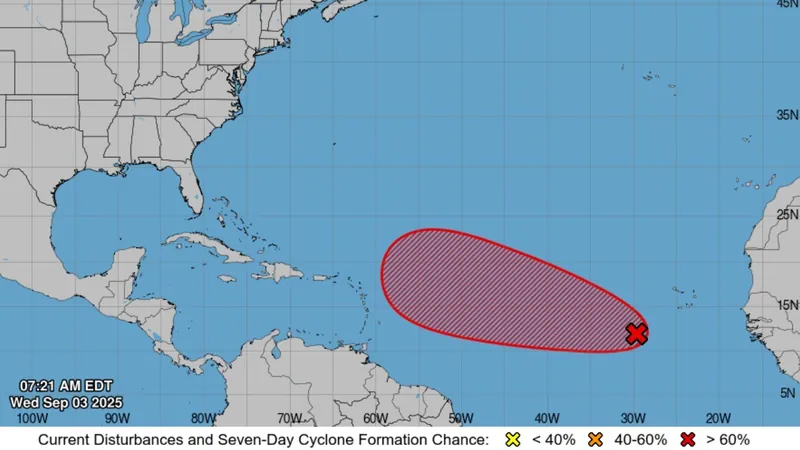
Meet the Colossal Giants: From Blue Whales to Paraceratherium
2025-09-04
Author: Benjamin
The Majestic Blue Whale: Nature's Biggest Wonder
When it comes to size, the blue whale reigns supreme as the largest mammal on the planet—and indeed, the largest animal ever to exist! Stretching an astonishing 30 meters (98 feet) and tipping the scales at a staggering 200 tons, these marine behemoths truly captivate our imagination.
A Land Titan: The African Elephant
While the blue whale dominates the ocean, on land, the crown goes to the African elephant. Standing proudly at up to 3.7 meters (12 feet) tall and 7 meters (23 feet) long, these gentle giants weigh between 4 and 7 tons, boasting the largest brain and nose among terrestrial mammals.
The Extinct Colossus: Paraceratherium
However, if we venture back in time, we find a true contender for the title of largest land mammal: the Paraceratherium. Imagine a hornless rhino with a giraffe-like neck that roamed the Earth millions of years ago. This colossal creature was found primarily in Asia, with remains unearthed across China, Mongolia, Kazakhstan, and Pakistan, dating back to the Oligocene epoch (34 to 23 million years ago). It measured a jaw-dropping 7.4 meters (24 feet) in length and stood 4.8 meters (15.7 feet) tall, dwarfing modern-day rhinos.
A Heavyweight Champion
Estimates suggest Paraceratherium weighed in at around 17 tons—nearly five times the weight of today’s southern white rhino! Fossils of this prehistoric marvel have been partially reconstructed at the American Museum of Natural History, revealing the sheer magnitude of this ancient giant.
A New Discovery Raises Questions
In a fascinating twist, a new species called Paraceratherium linxiaense was discovered in Tibet, dated to 26.5 million years ago. This remarkable find included a beautifully preserved skull over a meter long. As lead researcher Deng Tao noted, such a well-preserved skull is extremely rare.
The Competition: Other Giant Mammals
Yet, the title of the largest land mammal isn’t as secure as it seems. The straight-tusked elephant, Palaeoloxodon, may have been even heftier, with some estimates suggesting it could weigh up to 22 tons, albeit based on fragmentary evidence. Meanwhile, the Borson’s mastodon, which roamed parts of Eurasia 5 to 2.5 million years ago, also weighed around 15 to 16 tons, proving it was another formidable contender.
The True Giants: Beyond Mammals
Nevertheless, despite the fierce competition among land mammals, none can rival the sheer scale of Patagotitan mayorum—a dinosaur that dwarfed all, extending 37 meters (121 feet) in length and weighing as much as ten African elephants combined!
The quest to understand these prehistoric giants continues, reminding us of the incredible diversity and size of life that once thrived on Earth.









 Brasil (PT)
Brasil (PT)
 Canada (EN)
Canada (EN)
 Chile (ES)
Chile (ES)
 Česko (CS)
Česko (CS)
 대한민국 (KO)
대한민국 (KO)
 España (ES)
España (ES)
 France (FR)
France (FR)
 Hong Kong (EN)
Hong Kong (EN)
 Italia (IT)
Italia (IT)
 日本 (JA)
日本 (JA)
 Magyarország (HU)
Magyarország (HU)
 Norge (NO)
Norge (NO)
 Polska (PL)
Polska (PL)
 Schweiz (DE)
Schweiz (DE)
 Singapore (EN)
Singapore (EN)
 Sverige (SV)
Sverige (SV)
 Suomi (FI)
Suomi (FI)
 Türkiye (TR)
Türkiye (TR)
 الإمارات العربية المتحدة (AR)
الإمارات العربية المتحدة (AR)